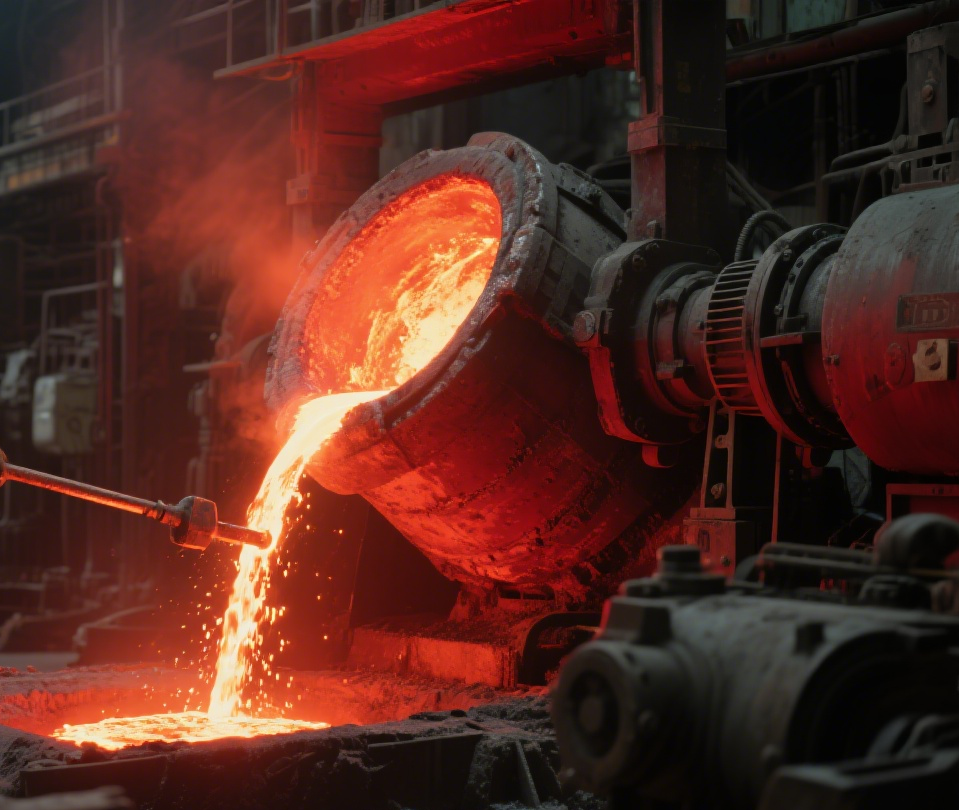By Ruoxin
July 2, 2025
Edited and Updated by Ethan Ma
July 3, 2025
Key Points:
·Steel billet exports help absorb overcapacity and support domestic mill profitability.
·Hot metal output remains high, sustaining stable PCI coal demand.
·Supply cuts and rising coking coal prices ease market pressure on PCI coal.
“Insufficient demand” has become a common judgment across the ferrous sector and is widely considered a major reason for the continued price decline in coking coal, coke, and pulverized coal. However, one overlooked phenomenon merits reflection: the steel market isn't performing as poorly as it seems.
As of early July, average profit per ton of steel ranges between 150–200 yuan, with the steel industry’s profit margin reaching 59.31%. Hot metal daily output remains high at 2.4–2.45 million tons. If demand were truly weak, how could such profitability persist?
One answer lies in steel billet exports, which have absorbed part of domestic overcapacity. According to China Customs, steel billet exports in May 2025 reached 1.3723 million tons — up 74.93% month-on-month and a staggering 344.71% year-on-year. Cumulative billet exports from January to May totaled 4.7165 million tons, up 305.8% YoY. The average export price was $454.5/ton, higher than the domestic price plus shipping costs, leaving decent profit margins. This export surge has helped ease domestic pressure. Thus, blaming market weakness solely on “poor demand” fails to capture the full picture. If demand holds steady, the core issue likely lies on the supply side: a mismatch caused by surging output of coal, coke, and pulverized coal.

Pulverized coal prices have dropped significantly. By mid-June, low-sulfur PCI in Changzhi was 880 yuan/ton, down 320 yuan YoY. In Jincheng, it fell to 770 yuan/ton, a YoY drop of 360 yuan. Steel mills have clearly benefited — their reduced PCI procurement cost supports the argument that falling PCI prices are helping mills cut costs.
According to China Metallurgical Industry Journal, the weighted average (converted to dry basis) PCI procurement cost in May was 903.47 yuan/ton, down 27.35 yuan from April, a 2.94% drop. For January to May, the average PCI cost was 979.22 yuan/ton, down 156.29 yuan YoY, or 13.76%.
To lower production costs, steel mills have slowly increased their PCI usage ratio. According to CISA (China Iron and Steel Association), the average PCI rate in 2023 among member mills reached 152.8 kg per ton of hot metal — an increase of 1.74 kg/t YoY. This reflects progress in injection technology and energy efficiency. Moreover, advances in grinding processes have made it feasible to use hard anthracite (previously less grindable, HGI 35–40) as PCI coal or even sintering coal, creating more cost-effective options for mills.
In July, three clear supports have emerged for the PCI coal market, pointing to potential price stabilization or mild recovery:
1. High Steel Mill Profits Ease Raw Material Price Suppression
Steel mills' average profit currently stands at 150–200 yuan/ton. On July 2, their profit margin reached 59.31%, up 23 yuan/ton from June 28. Low inventory levels indicate stable steel demand. The earlier declines in coking coal, coke, and PCI coal have collectively helped restore mill profitability.
2. Sustained High Hot Metal Output Supports PCI Demand
Daily hot metal output stands at 2.42 million tons, still relatively high. China’s pig iron output in May was 74.11 million tons, down 3.3% YoY. However, coal output rose significantly in the first five months, with some companies converting thermal coal production into PCI coal — one large firm shifted over 300,000 tons. Total pig iron output for Jan–May was 362.74 million tons, down just 0.1% YoY — a positive signal for PCI coal demand.
3. Output Cuts, Port Price Rebounds, and Coking Coal Strength Relieve Pressure
June saw intensified safety inspections in Shanxi, leading to reduced coal output. Some private high-sulfur mines halted due to cost pressures. Two anthracite mines in southern Shanxi were temporarily shut down after safety incidents, leading to a 7–10 day supply cut in both anthracite and PCI coal. These cuts have helped lift prices. By late June, both seaborne thermal coal and coking coal prices edged higher, further easing pressure on PCI coal.

| Index | RMB/t | DoD | Basis | Date |
|---|---|---|---|---|
| Datong 5500 | ex-mine | 07-01 | ||
| Shuozhou 5200 | FOR | 07-01 | ||
| Ordos 5500 | ex-mine | 07-01 | ||
| Yulin 6200 | ex-mine | 07-01 | ||
| Liulin Low-sulphur | ex-mine | 07-01 | ||
| Gujiao Low-sulphur | FOR | 07-01 | ||
| Xingtai Low-sulphur | ex-Factory | 07-01 | ||
| Yangquan PCI | FOR | 07-01 |
| Index | RMB/t | WoW | WoW% | Date |
|---|---|---|---|---|
